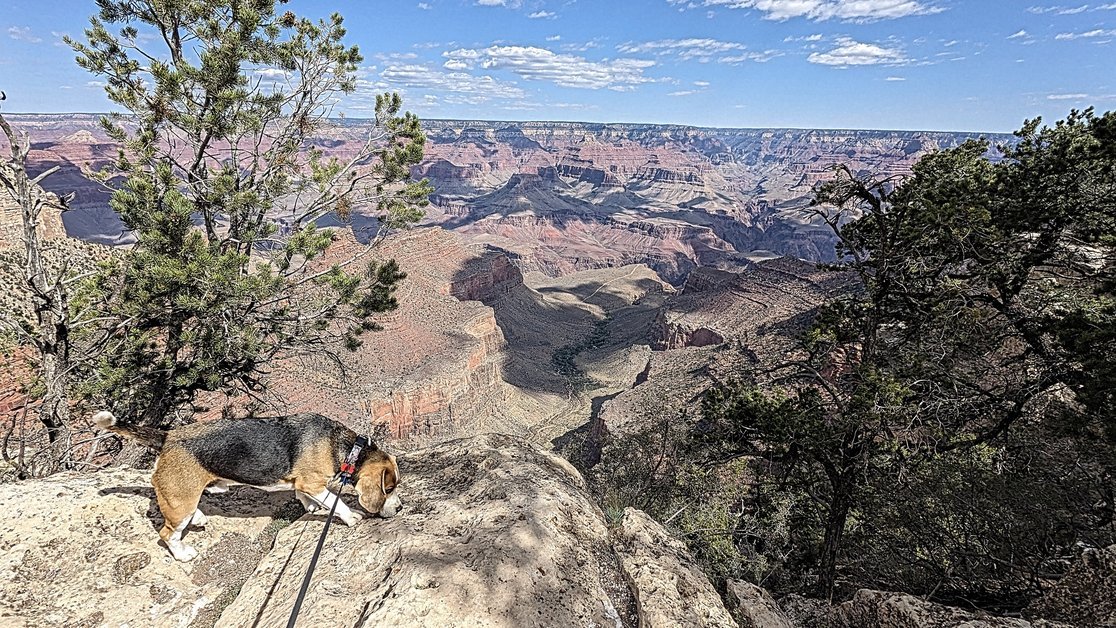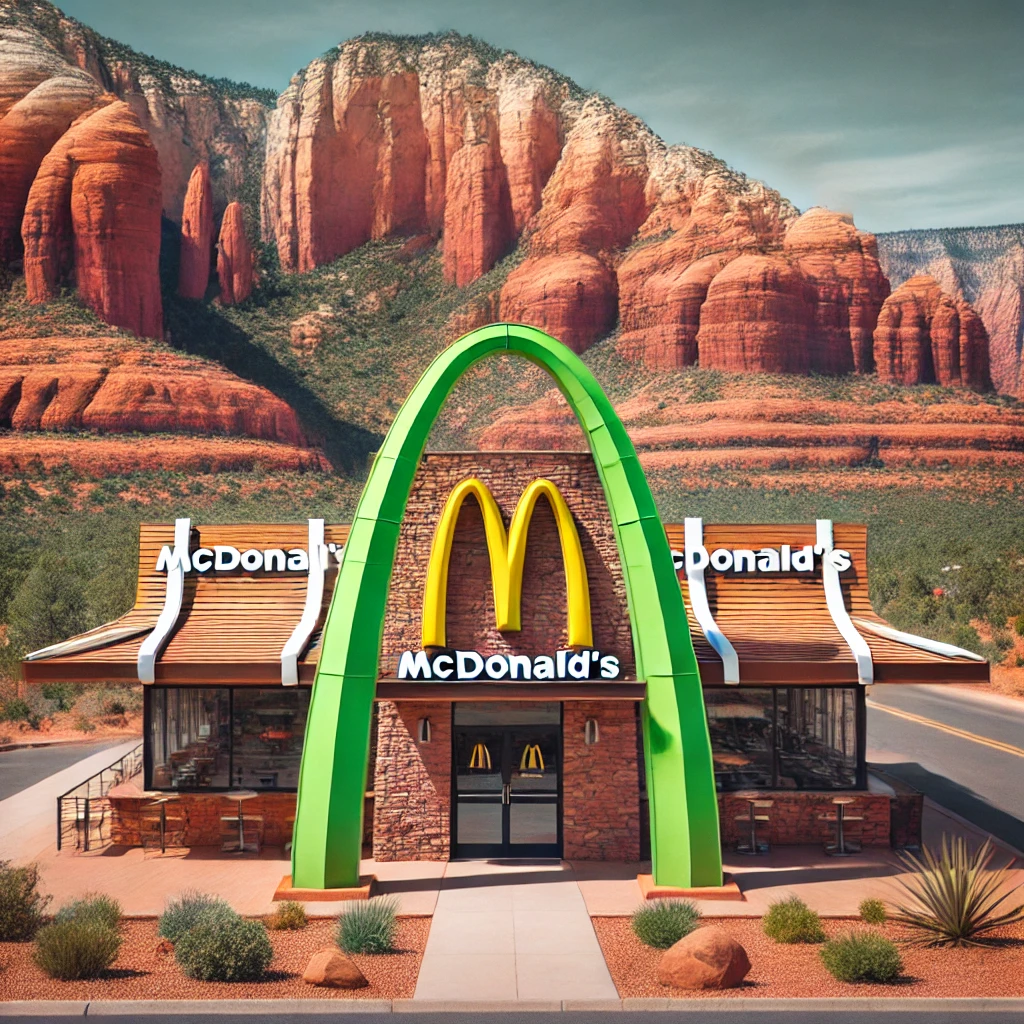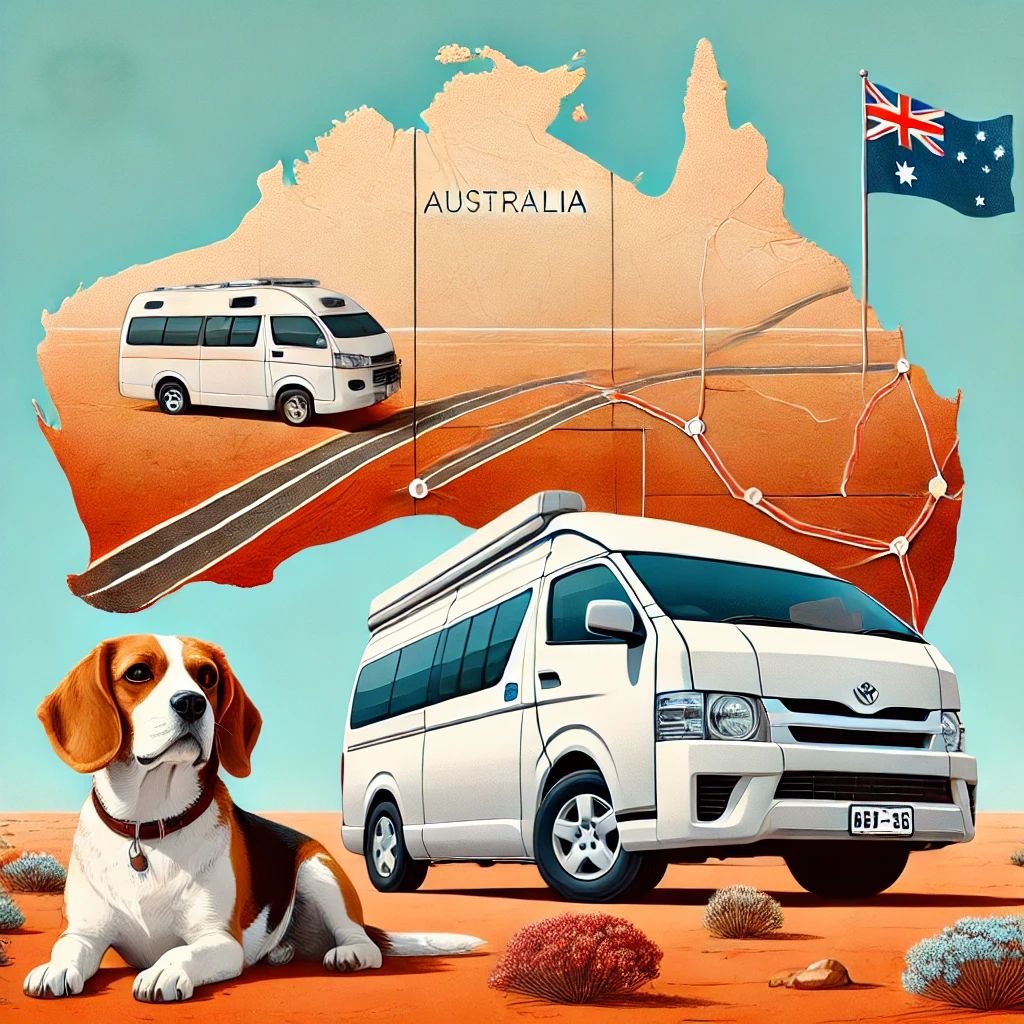They say the Grand Canyon is over 18 miles wide in places, and the South Rim brings you face-to-face with some of the most dramatic views on Earth. If you want standout photos, The Ten Most Instagrammable Locations at Grand Canyon national park South Rim can help your feed shine. We traveled here with a toddler, a beagle, and a thirst for capturing awe-inspiring scenes. In the sections below, you’ll find which overlooks deserve top priority, plus tips on angles and lighting. Whether you prefer epic sunrises or those blazing sunset hues, these locations deliver.
Why the South Rim Is a Photographer’s Dream
Quick Overview:
- Year-round accessibility and multiple shuttle options.
- Dozens of overlooks spread across a 13-mile rim.
- Dramatic rock layers that change color throughout the day.
The Grand Canyon’s South Rim draws millions of visitors each year, but not everyone arrives with photography in mind. Those who do quickly discover an exciting challenge: capturing the canyon’s vastness while balancing its shifting light. At sunrise, the deep gorge glows in soft tones, whereas midday reveals brighter reds and oranges. By sunset, everything dims into a painterly scene of purples and pinks. This constant color shift makes the South Rim a dynamic location for pictures—no two days look exactly alike.
If you’re traveling by car, you can drive to vantage points like Desert View Watchtower or Grandview Point. Alternatively, the park’s free shuttle bus can drop you near Hopi Point and Powell Point. Some areas, such as Hermit Road, are closed to private vehicles during peak season, so planning is essential. Before you head out, be sure to check updated schedules on the National Park Service site. If you’re bringing your dog along, note that pets aren’t allowed on shuttles (with the exception of service animals), so you’ll need your own transportation or an alternate plan.
The rim itself offers a mix of easy-to-navigate paths and more adventurous trails dropping into the canyon. If you’re after quick photo stops, the paved Rim Trail is perfect. For dramatic angles below the rim, try short hikes like the one leading to Ooh Aah Point on the South Kaibab Trail. You’ll see later in this article that both types of experiences offer Instagram gold, so you can pick the approach that suits your style and fitness level.
Wondering how to stay connected for real-time photo uploads? Check out Using an eSIM for Easy Cellular Data Roaming to keep your phone data rolling in remote regions.

A typical South Rim vantage where vast canyon walls meet desert skies
1. Mather Point: Iconic First Glimpse
Key Points:
- Next to the main Visitor Center—easy to reach.
- Sunrise watchers flock here for pastel canyon hues.
- Ideal for wide-angle shots of layered rock.
Mather Point often introduces travelers to the Grand Canyon. Within minutes of leaving your car, you’ll spot that legendary chasm stretching seemingly forever. Crowds can get heavy, but the payoff is worth it: the vantage includes a near-panoramic sweep of the canyon’s interior. If you’ve never been here, it’s an exciting place to test your camera settings or phone’s HDR features.
Arrive around 30 minutes before sunrise if you crave a quieter experience. The sky transitions from navy to pink, and the canyon walls morph from dark silhouettes into a warm tapestry. A tripod can help you manage low-light conditions. Don’t stress if you only have a phone, though—modern smartphone cameras handle these moments surprisingly well with built-in night or HDR modes.
Once you’ve nabbed your sunrise shots, walk along the adjacent Rim Trail for more angles. We discovered a few lesser-known overlooks just minutes from Mather Point. Our toddler enjoyed spotting squirrels, while our beagle, Sniffy, tried to follow their every movement. Remember: keep dogs leashed for everyone’s safety, and never feed wildlife.
Planning a multi-park swing? Read A Week Exploring the “Big 5” National Parks in Utah for more desert park photography tips.

Mather Point: popular, sometimes crowded, but always majestic
2. Yavapai Point: Geological Showcase
Key Points:
- Near the Yavapai Geology Museum.
- Huge panoramic stretch, often over 100 miles on clear days.
- Indoor viewing windows for a weather-proof photo op.
Yavapai Point sits close to Mather Point but often feels less chaotic. That’s partly because many visitors stop at Mather and call it a day. Yet Yavapai provides equally jaw-dropping perspectives—and you can explore the Yavapai Geology Museum if weather isn’t ideal. The museum’s large glass windows face the canyon, letting you capture interesting reflections or frame shots from indoors.
Outside, the vantage is particularly great for wide-angle photography. On days with minimal haze, you’ll see the canyon’s distant edges and maybe the North Rim rising in silhouette. Grab a polarizing filter (if you have one) to cut glare and saturate the sky’s blues, making the layered ridges stand out. If you’re shooting with a phone, you can replicate some of that effect by tapping the screen to adjust the exposure and make the sky pop.
We noticed that midday can be busy, but if you wait for a lull—often around late morning or early afternoon—you can secure a spot by the railing. The bright sun at this time can wash out colors, though, so consider bracketing your shots or using HDR to balance highlights and shadows.
Curious about where to stay if you’re road-tripping with a dog? Navigating Airbnb Landscape: Exploring Pros and Cons might help you choose accommodations that allow pets without draining your wallet.

Yavapai’s broad vantage showcases deep gorge textures and open sky
3. Desert View Watchtower: Historic & Scenic
Key Points:
- About 25 miles east of the main Visitor Center.
- Stone tower architecture built in 1932.
- Panoramic observation deck with Painted Desert views.
Desert View Watchtower merges history, architecture, and raw desert scenery all in one location. Architect Mary Colter designed it to echo ancestral Puebloan towers, so the watchtower itself is worth photographing—especially under the pinkish glow of sunrise or sunset. Climb the winding stairs to the top for an indoor vantage that reveals miles of canyon depth and, on a clear day, glimpses of the Painted Desert to the east.
We arrived in late afternoon, and found the watchtower’s stone walls tinted by slanting sunlight. You can snap a photo of the structure alone or frame it against the canyon, capturing a clash of man-made lines and nature’s layered tapestry. Step inside to see murals that add cultural texture to your shots. The vantage from the tower’s windows is perfect for capturing the Colorado River twisting in the distance.
Outside, wide-angle shots thrive. The horizon line seems endless, a unique contrast to closer overlooks like Mather Point. This area is also great if you aim to avoid midday crowds—some travelers skip Desert View due to its longer drive. That extra distance can reward you with more personal space for composing your images.
If you’re a digital nomad or remote worker traveling the region, see Creating a Productive Workspace on the Go for tips on working while road-tripping through spots like the Grand Canyon.

An eye-catching structure that offers 360-degree panoramas and intriguing architecture
4. Hopi Point: Golden Hour Glow
Key Points:
- Located along Hermit Road.
- Renowned sunset spot with broad canyon views.
- Ranks high for bold color transitions at dusk.
Hopi Point stands out for capturing some of the canyon’s most dramatic sunsets. Perched on a cliff edge with fewer obstructions, it provides a near-uninterrupted horizon line that lights up with oranges, pinks, and reds as the sun descends. Many photographers argue that if you can only catch one sunset on the South Rim, Hopi Point is the place.
Arrive well before sunset to stake out your vantage, especially in peak tourist season. We noticed that tripods appear at least 30 minutes ahead, forming a row along the railings. Don’t worry—there’s usually enough room to snap pictures, but prime spots near the corners fill fast. Once the sun dips, linger a bit; the most intense colors often show up 10–15 minutes after the sun vanishes.
To get here, consider using the Hermit Road shuttle (seasonal). If traveling with a dog, you’ll need a personal vehicle outside shuttle-only hours or have a friend watch your pet. The payoff is big: you can watch the canyon’s ridges shift from sharp detail to soft silhouettes. If you’re shooting video, try time-lapse mode to capture the color changes over a short clip. It’s an Instagram reel that stands out.
For those worried about winter or off-season temps, check Winter RV Camping Tips: Essential Tips for Navigating Freezing Nights in Your RV if you’re traveling in a camper during colder months around the Grand Canyon.

Though taken at Navajo Point, Hopi Point sunsets have a similarly vibrant glow
5. Shoshone Point: A Secluded Gem
Key Points:
- Less known to casual tourists, often quiet.
- Requires a short walk (about 1 mile) from the parking area.
- Offers a cliff-edge view perfect for wide or vertical shots.
Shoshone Point is sometimes referred to as the South Rim’s best-kept secret. You’ll see fewer directional signs, but that’s part of the charm. The small, unmarked parking area leads to a roughly one-mile stroll through pine forest. After that peaceful walk, you’ll emerge onto a rocky clearing with a sensational, cliffside overlook.
Because it’s less advertised, Shoshone Point can be calm even during midday. We visited in the late afternoon, meeting just a handful of travelers. The vantage is sweeping—you can step close (but safely) to the rock edges and capture the canyon dropping away beneath you. There’s also a covered picnic area that’s often reserved for events, but if it’s free, it can be a nice place to grab shade or even set up a dramatic shot with a table in the foreground.
For photography, a wide-angle lens is a must to capture both the canyon’s breadth and the sky. This is also a great spot for silhouette shots at sunset, if you can time it well. Because Shoshone Point sees fewer visitors, you have freedom to move around, experiment with angles, and not worry about someone walking into your frame every few seconds.
Curious about traveling with your four-legged companion through lesser-crowded areas? Our Adventure Taking Dogs to Zion National Park shares how we tackled lesser-traveled spots with a beagle in tow.

Shoshone Point offers open cliff edges where light and shadow play across the canyon’s vast contours
6. Grandview Point: Layers Upon Layers
Key Points:
- One of the highest spots on the South Rim.
- Less busy than Mather Point.
- Sweeping angle of the Colorado River if skies are clear.
Grandview Point, tucked along Desert View Drive, stands out for its near 360-degree coverage of the canyon. Because it’s slightly farther from the main village, it draws a smaller crowd. You’ll often find photographers setting up here for sunrise or sunset, but midday visits also yield unique images (though the lighting is harsher).
From the overlook railing, the rock layers seem to unfold in waves. On clear days, your camera might capture glimpses of the Colorado River’s shimmering waters far below. And if you’re comfortable venturing off the designated viewpoint, you can explore short paths that provide different angles on the same scenic area.
Grandview Point also features the starting point of the historically significant Grandview Trail—a steep path built for copper miners. You can descend partway if you want more varied perspectives, but remember that the trail is known for being rugged. Our toddler stayed behind this time, and we took turns checking a short stretch of the trail for photos. Even half a mile down can drastically change your vantage.
Looking for more off-radar scenic drives? Road Trip Reflections: Norseman to Coolgardie Journey might inspire you if you enjoy quieter roads with big payoffs—though that route is in Australia, the mindset is similar for seeking less-crowded scenic spots.

Grandview shares similarly broad horizons—just fewer crowds
7. Ooh Aah Point: The South Kaibab Surprise
Key Points:
- Short but steep hike from South Kaibab Trailhead.
- Exceptional sunrise vantage.
- Name says it all—most people gasp at first sight.
For those willing to step below the rim, Ooh Aah Point on the South Kaibab Trail is a fantastic introduction to the canyon’s interior. Only about 0.9 miles down, it offers a vantage that transforms your perspective—now you’re part of the canyon, rather than standing atop it. We made it here with a toddler in a hiking carrier and found it manageable, but be mindful of the steep drop-offs.
The name isn’t a marketing gimmick. Most hikers exclaim “ooh” or “ahh” upon arrival because the layered walls open up dramatically. Sunrise is a top pick: watch the canyon shift from purple shadows to bright oranges as the sun peeks over the rim. If you arrive early, you might beat the main wave of day hikers heading further down to Cedar Ridge or beyond.
For photography, consider a wide-angle lens to capture both the trail foreground and the sweeping canyon beyond. If you’re using a phone, stand a bit back from the edge and experiment with panorama mode. We also found that controlling your phone’s exposure can highlight the sky’s colors without losing details in the canyon’s shadows.
For general advice on safe camping near trailheads (especially if you’re in an RV or trailer), see Tips for Selecting a Safe Campsite for Parking Your Travel Trailer During Subzero Conditions—the weather may differ, but the safety principles remain valid.

Though this depicts Mather Point, Ooh Aah Point shares a similar sense of open grandeur—just lower in the canyon
8. The Rim Trail: Endless Angles
Key Points:
- Spans over 13 miles from South Kaibab Trailhead to Hermit’s Rest.
- Mostly paved, friendly for strollers or wheelchairs.
- Quick side paths lead to lesser-known overlooks.
If you’re after variety without strenuous hiking, the Rim Trail is perfect. Running along the canyon’s edge, it connects major overlooks such as Mather, Yavapai, and Hopi Points. The biggest perk? You can walk as much or as little as you want, and the terrain remains relatively level. We strolled here with our beagle, who found new scents at every bend, while we paused to snap photos of rock formations peeking from behind pine trees.
Many visitors hop from one main overlook to the next, missing the smaller vantage points in between. Don’t skip them. Some of our most memorable pictures involved narrower, unmarked outcrops just off the trail, where the canyon emerges in new shapes. If you’re traveling in a group, it’s fun to capture silhouette shots with the canyon backdrop—especially near sunrise or sunset.
For convenience, sections of the Rim Trail are near shuttle stops. If you want to avoid a long loop, walk for a while, then catch a shuttle back. Be aware that shuttles do not allow pets, so have a backup plan if you’re dog-parenting. Also, keep an eye on your water supply. Even though the Rim Trail is “easy,” the desert climate can dehydrate you faster than expected.
To prepare for a multi-destination trip, see Road Trip Budgeting: Driving From Melbourne to Perth Costs. Although it’s Australia-focused, the budgeting strategies apply to any lengthy journey where you’re balancing fuel, lodging, and entry fees.

The Rim Trail reveals new photo angles around each bend
9. Bright Angel Trailhead to Plateau Point: For the Adventurous
Key Points:
- Iconic trail starting near Bright Angel Lodge.
- Plateau Point sits 6 miles down, revealing the Colorado River.
- Demanding hike, but photos stand out.
Those eager to capture canyon depths from below the rim can tackle part (or all) of the Bright Angel Trail. The portion down to Indian Garden is well-maintained, with water stops (seasonal) and resthouses. If you go as far as Plateau Point, you’ll be rewarded with a wide, dramatic view of the Colorado River. This vantage is rare among typical “rim-only” photos, so your pictures immediately stand out on social feeds.
We found the upper section family-friendly enough for short day hikes, though going to Plateau Point means about 12 miles round trip. The payoff is enormous: you see the canyon walls towering overhead, and once you reach Plateau Point, the river emerges in full force. Shots capturing the green ribbon of river below the red rock cliffs can look mesmerizing. Remember to start early if hiking in warmer months, because the canyon interior can top 100°F (38°C).
For photography, carry enough water to keep you (and your gear) safe. A wide lens helps capture the sweeping terrain. If you want more intimate shots of cacti or layered rock patterns, switch to macro or portrait mode on your phone. Pay attention to midday light—shadows can be harsh, so adjusting your exposure or shooting in RAW (if available) helps salvage details.
Need more gear-storing solutions for big hikes? Living in a Campervan: Essential Tips for a Cozy Life shows how we manage camera equipment and hiking essentials while traveling full-time.

Heading down the trail offers fresh angles—just keep your pup safe and leashed
10. Hermit’s Rest Overlook: Peaceful Finale
Key Points:
- Westernmost point accessible by shuttle on Hermit Road.
- Rustic stone shelter designed by Mary Colter.
- Sunset can be lovely, but fewer crowds in early morning.
Hermit’s Rest marks the end of Hermit Road, beyond some of the South Rim’s busiest overlooks. A free shuttle typically runs here seasonally (no private vehicles allowed in peak times), but if you can get there, the overlook offers panoramic canyon views with fewer people. The shelter, also designed by Mary Colter, is a stone building housing a big fireplace—an interesting subject for interior shots if you want variety.
We found Hermit’s Rest ideal when we craved a laid-back spot to watch the changing sky. You can photograph the lodge itself from outside or focus on the canyon’s sprawl. If you time your trip for sunrise, you might be practically alone. At sunset, you can see some folks gather for pictures, but it’s not as packed as Hopi Point or Mather Point. This extra breathing room means you can move around, experiment with angles, or set up a time-lapse unimpeded.
If you want a mini-adventure, you can walk part of the nearby Rim Trail that connects multiple overlooks. Because Hermit Road is shuttle-only during busy seasons, note the last shuttle departure so you don’t get stranded. No dogs on the shuttle, so plan accordingly if you’re traveling with a pet. Snap a final wide shot capturing the shelter, the canyon, and maybe the setting sun, then roll out with a memory card full of southwestern wonder.
After exploring the South Rim, you might venture to Visiting Bryce Canyon National Park with Your Dog if your road trip extends into Utah. The red rock vistas differ from the Grand Canyon but are equally photographable.

Hermit’s Rest has a cozy shelter for breaks—though not pictured here, the vibe is similarly peaceful
FAQ
When should I visit for the best light?
Sunrise and sunset are prime. The golden hour casts softer shadows and highlights the canyon’s colors beautifully.Is a phone camera enough for these overlooks?
Absolutely. Modern phones perform well, especially if you use HDR or panorama modes. A DSLR or mirrorless camera offers extra control, but it’s optional.Which location is ideal for avoiding crowds?
Shoshone Point often has fewer visitors, and Hermit’s Rest Overlook can be quieter if you catch an off-peak shuttle.Can I bring my dog to these spots?
Dogs are allowed on the Rim Trail and at many overlooks if leashed, but not on shuttle buses or below the rim (except designated paved areas). Check official rules before you go.Are there photo restrictions in certain areas?
Drones are prohibited in all national parks, so keep those grounded. Otherwise, standard photography is welcome—just follow posted signs and stay behind safety rails.Is sunrise or sunset better for pictures?
Both are stunning. Sunrise is cooler and less crowded, while sunset can offer more vibrant reds and oranges. If you can, catch both at different overlooks.
By hitting The Ten Most Instagrammable Locations at Grand Canyon national park South Rim, you’ll gather a portfolio of diverse shots—rustic stone towers, hidden cliff edges, panoramic ridges, and maybe a cameo by your traveling beagle or toddler. Whether you chase the hush of dawn or the fiery glow of dusk, the South Rim never fails to deliver the magic. Enjoy the vistas, respect the land, and let your camera capture each timeless moment!




